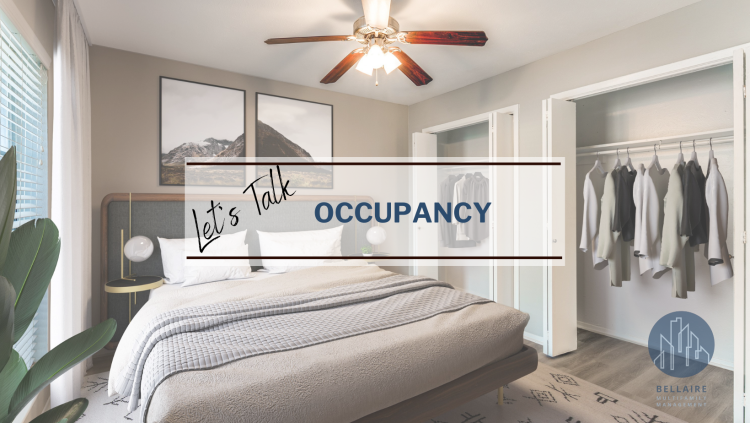How does BMM Evaluate and Drive Occupancy?
Let’s Start With the Basics, Terms and Definitions:
Physical Occupancy: Physical occupancy refers to the actual number of units or apartments in a multifamily property that are leased or rented out and are physically occupied by residents. It is a measure of the percentage of units that are currently occupied in relation to the total number of units in the property. For example, if a multifamily property has 100 units and 90 units are currently leased and occupied, the physical occupancy would be 90%.
Financial Occupancy: Financial occupancy, also known as “economic occupancy,” is a measure of the percentage of potential rental income that is actually being collected from the occupied units. It takes into account not only the physical occupancy but also factors such as delinquent rent, vacancies due to non-payment or other reasons, concessions or discounts offered to residents, and any other factors that may affect the actual rental income collected. Financial occupancy provides a more accurate picture of the property’s revenue-generating performance.
Economic Occupancy: Economic occupancy is similar to financial occupancy and is often used interchangeably. It refers to the percentage of potential rental income that is actually being collected, considering all the factors that may affect the actual rental income, including vacancies, delinquent rent, concessions, and other adjustments. Economic occupancy takes into account the financial performance of the property as a whole, considering both the occupied and unoccupied units.
What do you look at when evaluating your property? Are you requesting up-to-date information from your property management company, digging into your financial statements, or delinquency details? These occupancy metrics are important performance indicators used to assess the effectiveness of leasing strategies, rental income generation, and overall property performance.
Now Let’s Talk Real Time Solutions:
Driving occupancy increases in multifamily property management requires a strategic approach and effective implementation of various marketing, leasing, and management strategies. Here are some common strategies that can help increase occupancy in multifamily properties:
Marketing and Advertising: Implementing effective marketing and advertising strategies can help create awareness about the property and attract potential residents. This can include online and offline advertising, such as digital marketing, social media, search engine optimization (SEO), targeted campaigns, signage, and print ads. A well-designed website, professional photos and virtual tours of the property, and compelling property descriptions can also help generate interest and inquiries from prospective residents.
Competitive Pricing and Incentives: Pricing is a critical factor in attracting and retaining residents. Conducting market research to understand the local rental market and setting competitive rental rates can help attract more prospective tenants. Offering incentives, such as move-in specials, discounted rent, or other promotional offers, can also incentivize tenants to choose your property over competitors.
Property Appearance and Maintenance: The physical condition and appearance of the property play a significant role in attracting and retaining residents. Maintaining a clean, well-maintained, and aesthetically pleasing property can create a positive impression and encourage prospective residents to lease at your property. Promptly addressing maintenance issues, conducting regular property inspections, and ensuring that common areas are well-maintained can also contribute to resident satisfaction and retention.
Exceptional Customer Service: Providing excellent customer service can make a big difference in attracting and retaining residents. Being responsive to resident inquiries, promptly addressing their concerns or issues, and providing personalized attention can create a positive experience for residents and build their loyalty. Offering convenient lease terms, flexible payment options, and providing amenities or services that cater to their needs can also contribute to higher tenant satisfaction and occupancy.
Resident Retention Programs: Retaining existing residents is more cost-effective than acquiring new ones. Implementing resident retention programs, such as lease renewal incentives, referral programs, or community events, can help build tenant loyalty and encourage lease renewals, thus reducing turnover and vacancy rates.
Collaboration with Locators: Collaborating with local real estate agents or locators who specialize in multifamily properties can help expand the reach of your property to a wider audience of prospective residents. Offering referral commissions or other incentives to agents who bring in qualified residents can also incentivize them to actively promote your property.
Targeted Resident Screening: Implementing a thorough resident screening process can help ensure that qualified and reliable residents are selected, reducing the risk of eviction or other issues that may lead to vacancies. This can include conducting background checks, credit checks, employment verification, and rental history verification to assess the suitability of prospective tenants.
Driving occupancy increases requires a multifaceted approach, including effective marketing and advertising, competitive pricing and incentives, maintaining the property’s appearance and addressing maintenance needs promptly, providing exceptional customer service, implementing resident retention programs, collaborating with real estate agents or locators, and conducting targeted resident screening. By implementing these strategies, property managers can increase occupancy rates and maximize the revenue-generating potential of multifamily properties.

